Interview with cinematographer Bruno Delbonnel, AFC, ASC, about his work on Joe Wright’s film “Darkest Hour”
“Smoke, Cognac, and Latex” by François Reumont on behalf of the AFCWhat did you like best in Darkest Hour ?
Bruno Delbonnel : Truthfully, the human aspect over the historic one. Everyone, or almost everyone, knows that period. Churchill’s words are so famous that they’ve even become popular sayings. What was great was making that incredible character come alive on screen and bringing viewers to the end of the story, even though they already knew how it would end.
A man that drags along his political and military baggage behind him and who, nonetheless, ends up becoming forced to serve as Prime Minister by default. A lover of champagne, cognac, and cigars, father of four children who sacrifices his family for the sake of power. A writer (but also painter, even though that’s not shown in the film) who places a high value on words and whose eloquence is able to favourable influence the situation. The screenplay’s goal was really to celebrate the power of words, as in the last scene of the film where his very brilliant speech enables him to draw the country into war.
This is a scene that takes place in the British Parliament, an emblematic location for the film.
BD : The House of Commons was one of our major sets. We return to it at three key moments in the film. We visited the original location but quickly observed it would be impossible to shoot there. First of all, because it’s been transformed into a sort of TV set (cameras broadcast the debates live each week) with a gigantic light box hanging from the ceiling that serves as a top light. Although we’d theoretically have been authorized to film inside, the very strict rules would also have forbidden us from having the actors sit down !
That’s why we recreated everything in studio and we took inspiration from the hall as it was at that time (it was reconstructed after a bombing in 1941), and which included windows. It was through one of those windows that I let that heavily-contrasted ray of light come in, which falls on the set and the actors entirely dressed in black. It was almost a black-and-white image and something like a beam that created a cage of light for the speakers.
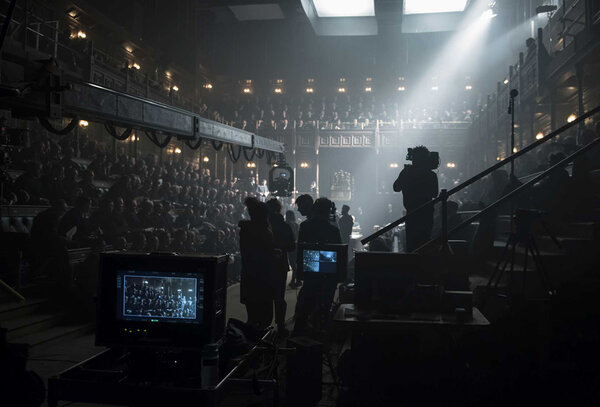
The film has very few outdoors scenes...
BD : Historically, the spring of 1940 was one of the loveliest ever in London. It was originally part of the script. But, since we were shooting in the middle of winter in northern England, needless to say things became difficult in that respect. So, we reduced those scenes as much as we could, and the few remaining ones (such as the traveling shot of the Londoners from the car) were fixed up as best as possible in colour grading.
Moreover, the fact that Chris Nolan had filmed Dunkirk just a few months prior also strongly influenced our decision to delete the few war scenes that had originally been included in the script. It was impossible for us to compete in the same category ! From a certain perspective, Darkest Hour could even be seen as the more intimate companion to Nolan’s film.
It’s even an underground film...
BD : The idea that Joe Wright and I shared was to guide the film towards a rather intense claustrophobia. As the film progresses, the characters head further and further underground, in tight spaces, such as that “War Room” that was recreated on the basis of the original room (which can be visited in London). The little room from which he phones Roosevelt, for example, is based on reality, a fake WC door behind which was the telephone that allowed him to contact Washington. It was also an opportunity for us to tell the story of a shift in the British kingdom’s history. The end of a colonial empire, a ruined aristocracy, and a society generally shrivelling away. From that point of view, it was really the turning point between the 19th and the 20th centuries, a turning point that was personified by that statesman who was the first of a new breed of politician.
How did you set up the night-time meeting with the King, which closes the second act ?
BD : I’m increasingly inclined to consider a film’s lighting as though it were sheet music. It’s about creating rapid movements, slower ones, soft or harsh sounds...everything is about the many variations that allow me to play on an idea in function of the dramaturgy and situations.
In that scene, the Prime Minister is beset by doubt, on the verge of giving up (Halifax pushing him in the direction of accepting a peace brokered with the Nazis by Mussolini). Reading the script, we didn’t really know how to go about it, because nothing was specified except that it happened at night, at Churchill’s home. Would the scene take place in his sitting room, by the fireside, on leather couches, as one might imagine it at first sight ? Play it calmly between those two characters who weren’t meant to meet (a priori) under such conditions.
We intentionally did the opposite : the two characters speak to one another standing up, in that bare room that is more reminiscent of a prison than an aristocrat’s home. The scene also begins with Churchill in the darkness, his wife Clementine opens the door and switches on the bare bulb hanging from the ceiling, much as a prison warden might have switched on the light in a cell. In order to preserve the contrast and the minimalistic effect as much as possible, I shot with a simple 200 watts tungsten bulb at 1,000 ISO on the Alexa, just helping myself by adding a little ring of LEDs just above the frame, in order to supplement the aperture I was lacking. Of course, the lightbulb is completely burnt out on screen, but the shadows are hard and I think the ambience serves that crucial scene.
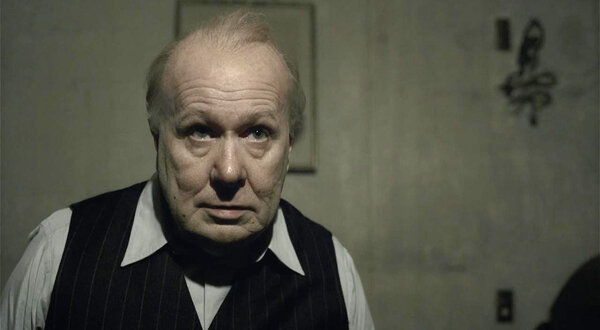
Did you have any difficulties filming the make-up ?
BD : As Gary Oldman didn’t want to gain weight for the movie, we did everything using make-up and latex prosthetics. Six months of preparation before shooting started were required with make-up artist Kazuhiro Tsuji (Benjamin Button, The Grinch, Looper, etc.) in order to obtain the proper result. I wasn’t at all involved in that preparation. Only two test shoots were scheduled before work began and all I can say is that the results with the naked eye were already very impressive.
I had no problems with the rendering on any part of the film, except for a close-up in the scene I was discussing earlier with the bare lightbulb on the ceiling, because of the very strong contrast caused by that set-up, which sometimes caused the edges of the wig to become apparent. The other challenge was related to Gary Oldman, who spent three hours a day in make-up, of which half was just for the face. And I won’t even begin to discuss the problems related to the reddening of the skin in scenes where he’s supposed to be angry, which makes his face two-toned (in function of the parts covered by latex and the others). It was a challenge for him to keep his mind calm in spite of his voice that had to really get angry sometimes !
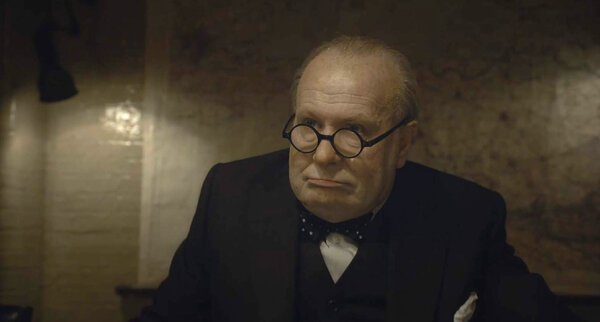
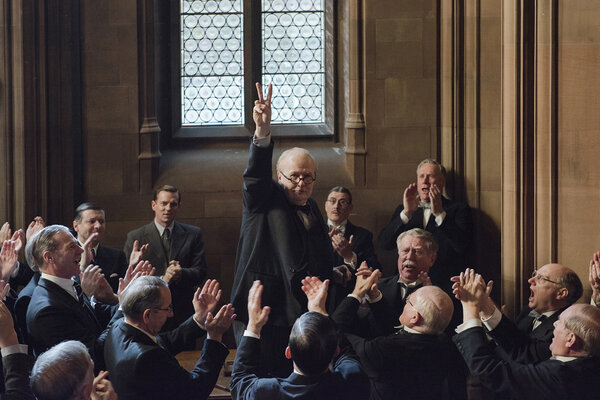
What is your favourite scene ?
BD : Definitely the scene of the first meeting at Buckingham Palace. The viewer discovers a luxurious place, but that is a bit threadbare. The windows are protected by wooden planks and darkness reigns. The scenes opens with a very long lateral travelling shot covering about a dozen rooms, with seventeen beams of light placed in spaces left open at the top of the windows (larger than what they were in reality). One could see almost nothing in the shadows, and Gary Oldman would successively pass through each ray of light. At the end of that movement, we discover the two men standing face-to-face each in a beam of light, as though they were obliged to stand in the light to see one another.
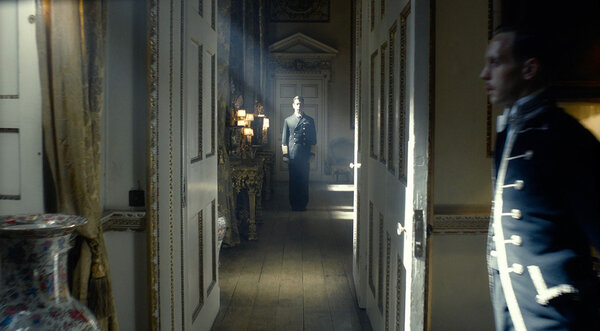
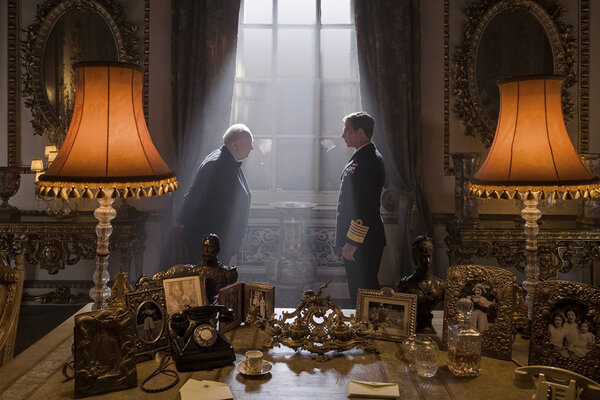
Well, unfortunately for me, that beautiful travelling shot was almost entirely deleted during editing. It happens ! Sometimes, I’m sorry the editors don’t participate in the preparation of the film with the lighting and set design teams... I think it would be a good idea ! Joel Coen believes the exact opposite, in fact. For him, editing is there to take the material captured during shooting and to make something else out of it. But what one must keep in mind is that he is both the director and the editor of his own films !
(Interview conducted by François Reumont on behalf of the AFC, and translated from French by Alexander Baron-Raiffe)
Production : Tim Bevan, Eric Fellner, Anthony Mc Carten, Douglas Urbanski
Set Design : Sara Greenwood
Special-Effects Make-Up : Kazuhiro Tsuji.
 En
En Fr
Fr






